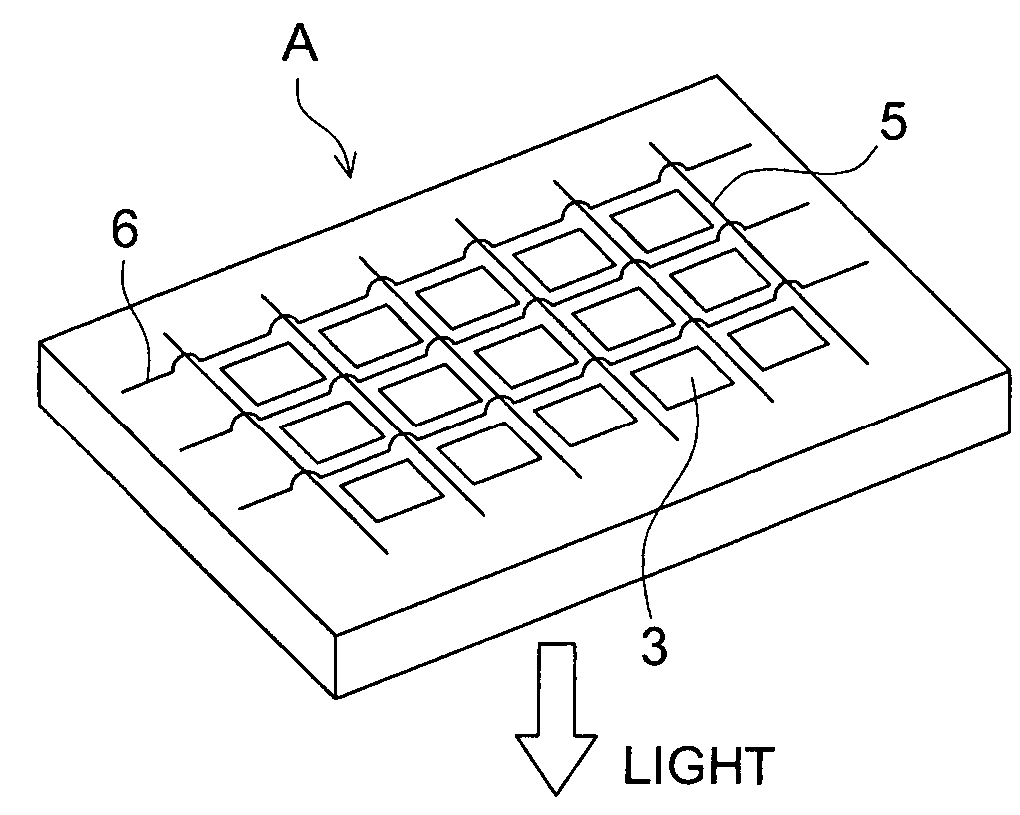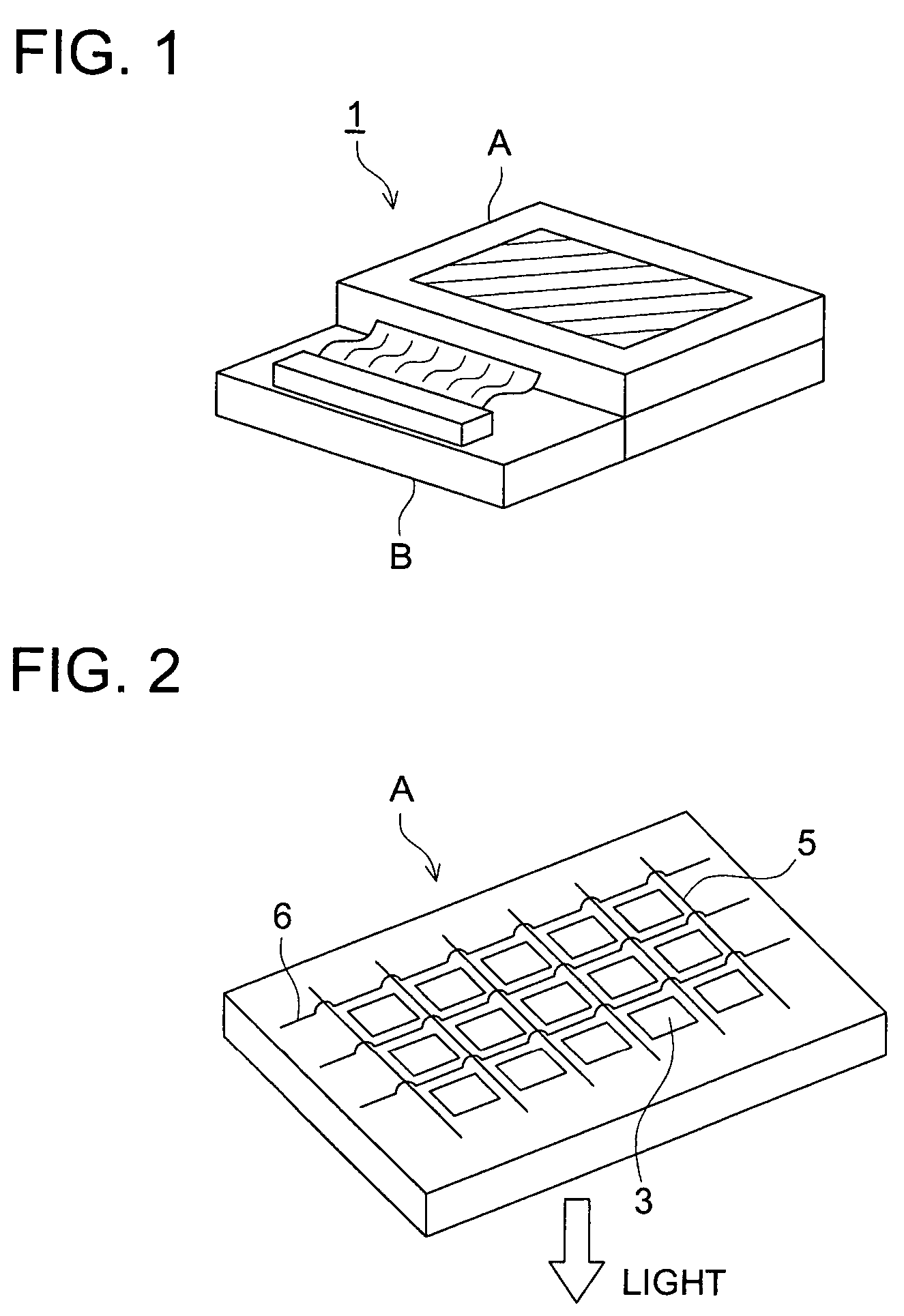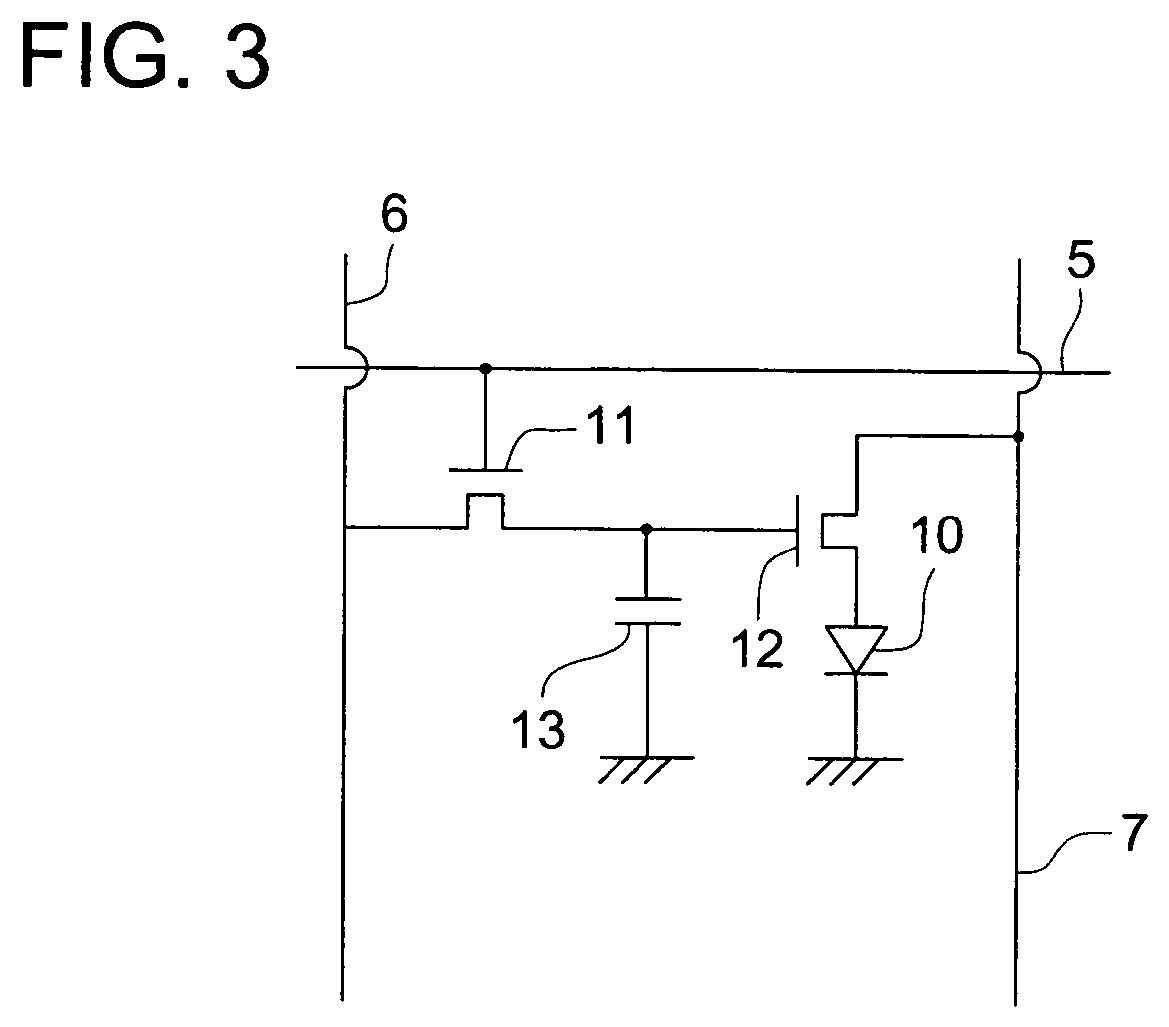Organic electroluminescent element, and display and illuminator
a technology of electroluminescent elements and organic elements, applied in the direction of discharge tube luminescnet screens, other domestic articles, natural mineral layered products, etc., can solve the problems of high luminance emission, display burn-in, image shown earlier on the display is more likely to deteriorate, etc., to achieve high quantum yield, high luminance, and high durability
- Summary
- Abstract
- Description
- Claims
- Application Information
AI Technical Summary
Benefits of technology
Problems solved by technology
Method used
Image
Examples
synthetic example 1
Synthesis of Exemplified Compound 1-2
[0186]1-Bromo-4-iodobenzene of 50 g, 24 g of carbazole, 0.6 g of copper powder, and 19 g of potassium carbonate were added to 200 ml of dimethlformamide, and heated under reflux for 11 hours. After that, water was added to the resulting reaction solution, and the organic solution phase was separated, and purified according to column chromatography. The solvent was evaporated to obtain a solid residue. The solid residue was recrystallized from acetonitrile to obtain 33 g of Compound A (white product, yield: 72%). Compound A of 8 g was dissolved in a 100 ml anhydrous tetrahydrofuran, and maintained at −70° C. with dry ice. Then, the resulting solution was added with 24 ml of a butyllithium n-hexane solution, stirred for one hour, further added with a solution in which 6.0 ml of trimethoxyborane was dissolved in 20 ml of anhydrous tetrahydrofuran, and stirred at room temperature for one day. After that, the resulting solution was added with 10% sulf...
synthetic example 2
Synthesis of Exemplified Compound 4-4
[0189]Twenty g of 4-methylcyclohexanone and 38 g of aniline was added to concentrated hydrochloric acid and heated under reflux for 40 hours. The resulting reaction solution was neutralized, and mixed with water and ethyl acetate. Subsequently, the organic solution phase of the mixture was separated, and dried over magnesium sulfate. The solvent of the dried organic solution was distilled off under reduced pressure, and the residue was purified according to column chromatography to obtain 31 g of an amine compound. The resulting amine compound was brominated according to Sandmeyer reaction to obtain a brominated compound. Then, carbazol and 1.1 g of the brominated compound were incorporated in a xylene solvent, and reacted while heating with agitation for 8 hours while stirring in the presence of palladium acetate and tri-tert-butylphosphine as catalysts and of potassium carbonate as a base. After reaction was completed, the resulting reaction so...
synthetic example 3
Synthesis of Exemplified Compound HA-1
[0190]The diamine compound described below of 2.6 g, 5.1 g of 2,2′-dibromophenyl, 0.45 g of bis(dibenzilydeneacetone)-palladium, 0.85 g of tri-tert-butylphospine, and sodium tert-butoxide were mixed in 60 ml of toluene, and reacted with agitation for 8 hours at refluxing temperature under a nitrogen atmosphere. The resulting mixture was added with toluene and water, and the organic solution phase of the mixture was separated, and purified according to silica gel column chromatography. The purified product was recrystallized from toluene to obtain 1.7 g of light brown crystal, Exemplified compound HA-1 (Yield 32%).
[0191]
PUM
| Property | Measurement | Unit |
|---|---|---|
| external quantum efficiency | aaaaa | aaaaa |
| internal quantum efficiency | aaaaa | aaaaa |
| inner quantum efficiency | aaaaa | aaaaa |
Abstract
Description
Claims
Application Information
 Login to View More
Login to View More - Generate Ideas
- Intellectual Property
- Life Sciences
- Materials
- Tech Scout
- Unparalleled Data Quality
- Higher Quality Content
- 60% Fewer Hallucinations
Browse by: Latest US Patents, China's latest patents, Technical Efficacy Thesaurus, Application Domain, Technology Topic, Popular Technical Reports.
© 2025 PatSnap. All rights reserved.Legal|Privacy policy|Modern Slavery Act Transparency Statement|Sitemap|About US| Contact US: help@patsnap.com



